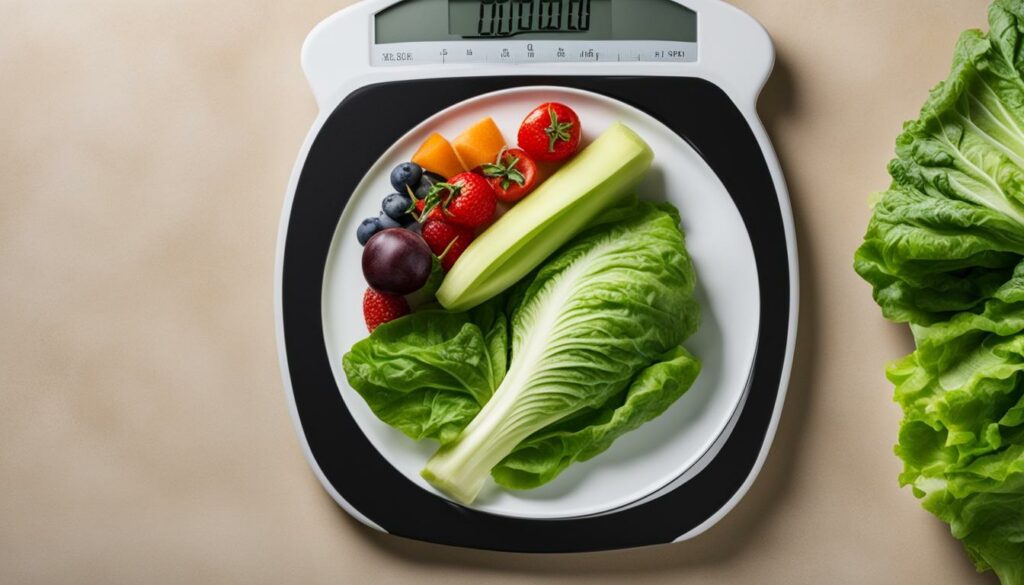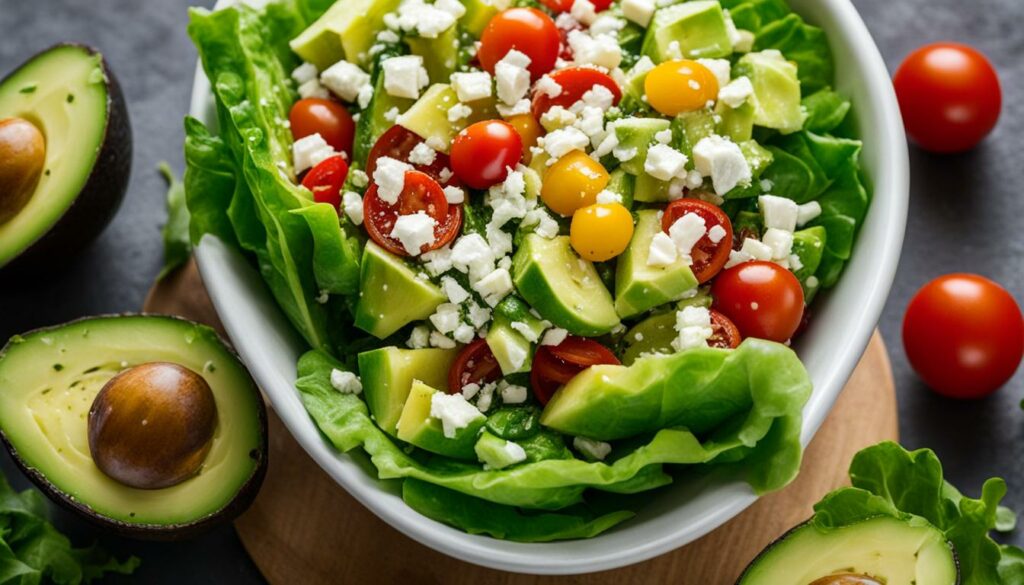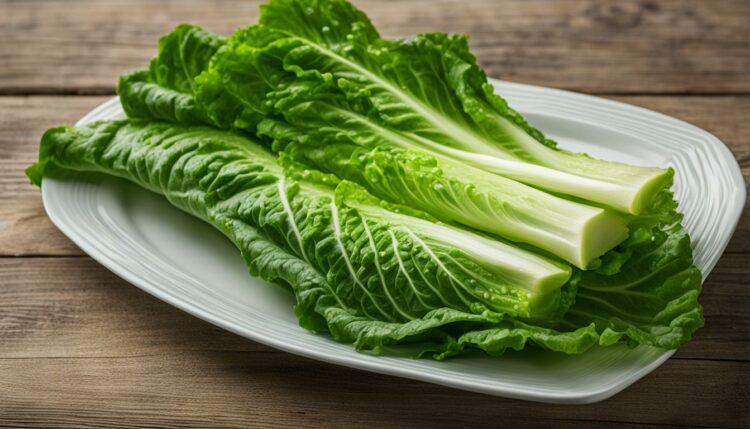Romaine lettuce is a nutritious and low-calorie food that offers a plethora of health benefits.
Known for its crisp texture and mild taste, romaine lettuce is a popular choice for salads, sandwiches, and wraps. But did you know that this leafy green powerhouse is not only delicious but also packed with essential vitamins, minerals, and antioxidants?
When it comes to nutrition, romaine lettuce shines. It is an excellent source of vitamins C, K, and A, which are vital for a strong immune system, healthy vision, and bone health. It also contains important minerals like calcium, folate, magnesium, and potassium.
These nutrients play a crucial role in supporting various bodily functions, from muscle and nerve function to heart health.
One of the standout qualities of romaine lettuce is its low calorie and carbohydrate content. With only 8 calories per cup and minimal carbohydrates, it is an excellent choice for those aiming to lose weight or maintain a healthy diet.
Additionally, romaine lettuce is high in fiber, promoting healthy digestion and providing a feeling of fullness.
Key Takeaways:
- Romaine lettuce is a low-calorie and nutrient-dense food.
- It is rich in vitamins C, K, and A, as well as minerals like calcium, folate, magnesium, and potassium.
- The high fiber content of romaine lettuce supports healthy digestion and aids in weight management.
- Romaine lettuce is versatile and can be incorporated into a variety of recipes.
- Including romaine lettuce in your diet can help boost your overall health and well-being.
Nutritional Benefits of Romaine Lettuce
Romaine lettuce is a powerhouse of essential nutrients that provide a wide range of health benefits. Let’s explore the key vitamins, minerals, antioxidants, and fiber found in romaine lettuce that contribute to its nutritional value.
Vitamins
Romaine lettuce is packed with vitamins, making it an excellent addition to a well-rounded diet. It is particularly rich in vitamin C, which plays a crucial role in supporting the immune system and promoting the health of bones and teeth.
A single cup of romaine lettuce provides approximately 17% of the recommended daily intake of vitamin C[1].
Did you know? Vitamin C is an antioxidant that helps protect the body against the damaging effects of free radicals, which can contribute to chronic diseases and aging.
In addition to vitamin C, romaine lettuce also contains other important vitamins such as vitamin K, vitamin A, and folate. Vitamin K is essential for blood clotting and bone health, while vitamin A supports vision, immune function, and skin health. Folate, a B vitamin found in romaine lettuce, plays a vital role in cell division and DNA production.
Minerals
Romaine lettuce is a great source of minerals that are necessary for various bodily functions. It contains minerals like calcium, phosphorus, magnesium, and potassium, which are vital for bone health, muscle function, and nerve function.
These minerals work together to support overall well-being and ensure the proper functioning of the body’s systems[1].
Antioxidants
Romaine lettuce is rich in antioxidants, including beta carotene and lutein. These antioxidants help protect the body’s cells from damage caused by harmful free radicals. Research suggests that a diet rich in antioxidants may help reduce the risk of chronic diseases, such as heart disease and certain types of cancer[2].
Fiber
Romaine lettuce is an excellent source of dietary fiber, which is essential for maintaining a healthy digestive system. Fiber adds bulk to the diet, promotes regular bowel movements, and helps control cholesterol levels. Including romaine lettuce in your meals can contribute to good digestive health and support overall well-being[3].
To summarize, romaine lettuce provides a host of nutritional benefits, including vitamins C, K, and A, minerals like calcium and potassium, antioxidant properties, and fiber content. By incorporating romaine lettuce into your diet, you can enjoy the advantages it offers to support a healthy lifestyle.
Table: Nutritional Content of Romaine Lettuce per 1 Cup (56g)
Source: USDA National Nutrient Database[4]
| Nutrient | Amount |
|---|---|
| Calories | 8 |
| Carbohydrates (g) | 1.5 |
| Fiber (g) | 1 |
| Vitamin C (mg) | 8 |
| Vitamin K (mcg) | 48 |
| Vitamin A (IU) | 409 |
| Calcium (mg) | 32 |
| Potassium (mg) | 116 |
| Magnesium (mg) | 8 |
- Romaine lettuce is a rich source of vitamins C, K, and A.
- It provides essential minerals like calcium, potassium, and magnesium.
- The antioxidants found in romaine lettuce may help reduce the risk of chronic diseases.
- The fiber content in romaine lettuce promotes healthy digestion and cholesterol control.
With its impressive nutritional profile, romaine lettuce is a versatile and nutritious choice for salads, wraps, sandwiches, or as a crunchy addition to various dishes.
References:
- Bouwens, M., & Afman, L. A. (2016). Dietary fiber and the gut microbiome. In Dietary Fiber and Health (pp. 45-57). Springer, Cham.
- López-Leiva, M. H., & Martínez-González, M. Á. (2020). Antioxidant Intake and Cardiovascular Disease: Research Challenges and New Opportunities in Primary and Secondary Prevention. Antioxidants, 9(8), 717.
- Jiang, S., & Cui, M. (2018). Fiber and Prebiotics: Mechanisms and Health Benefits. Nutrients, 10(10), 1416.
Stay tuned for Section 3, where we explore how romaine lettuce can aid in weight loss and provide delicious recipes to incorporate this nutritious leafy green into your meals.
Romaine Lettuce and Weight Loss
Romaine lettuce is a popular choice for those looking to lose weight. With only 8 calories and 1-2 grams of carbohydrates per cup, it is a low-calorie and low-carb option that can help create a calorie deficit. Its high water and fiber content can also promote satiety and reduce the likelihood of overeating.
When it comes to weight loss, incorporating romaine lettuce into your meals can be a smart strategy. Not only is it nutrient-dense, but it also adds flavor and texture to your dishes without adding excessive calories. This makes it easier to stick to your weight loss meal plan without feeling deprived.
Romaine lettuce is incredibly versatile and can be used in a variety of recipes. Whether you’re looking to make a refreshing salad, a nutritious wrap, or a flavorful grilled dish, romaine lettuce can be the star ingredient. Its crisp texture and mild taste make it a great base for any meal.
If you’re looking for inspiration, here are a few delicious romaine lettuce recipes to try:
- Classic Caesar Salad: Toss crisp romaine lettuce leaves with a creamy Caesar dressing, Parmesan cheese, and crunchy croutons.
- Chicken Lettuce Wraps: Fill fresh romaine lettuce leaves with grilled chicken, diced vegetables, and a drizzle of your favorite sauce.
- Grilled Romaine Salad: Brush romaine lettuce halves with olive oil, sprinkle with salt and pepper, and grill until lightly charred. Top with cherry tomatoes, crumbled feta cheese, and a tangy vinaigrette.
Incorporating romaine lettuce into your weight loss journey can be a delicious and nutritious way to support your goals. Experiment with different recipes and enjoy the benefits of this versatile leafy green!

How to Incorporate Romaine Lettuce into Your Diet
There are numerous ways to enjoy the nutritional benefits of romaine lettuce in your diet. Whether you’re looking for a light lunch, a savory topping, or a low-carb alternative, romaine lettuce can be a versatile addition to your meals. Here are some ideas to get you started:
- Salads: Romaine lettuce is a perfect base for fresh and vibrant salads. Try the classic Caesar salad, where crisp romaine leaves are tossed in a creamy dressing, topped with Parmesan cheese, and finished with crunchy croutons. You can also experiment with other salad combinations by adding your favorite toppings and dressings.
- Tacos and Chili: Give your tacos and chili a healthy twist by adding romaine lettuce as a topping. Its crunchiness and mild flavor complement the savoriness of the fillings, providing a refreshing contrast.
- Sandwich Substitute: For those looking to reduce their carbohydrate intake, romaine lettuce leaves can serve as a nutritious alternative to sandwich bread. Wrap your favorite fillings, such as grilled chicken or turkey, in large romaine lettuce leaves for a satisfying and lower-carb meal.
- Grilled Delight: Grilling romaine lettuce can elevate its flavors and add a smoky touch to your dishes. Simply brush the lettuce with olive oil, sprinkle with salt and pepper, and grill for a few minutes on each side until slightly charred. This grilled romaine can be chopped and used as a topping or served as a side dish.
- Wraps and Lettuce Cups: Another way to enjoy romaine lettuce is by using it as a wrap or lettuce cup. Fill large romaine leaves with your desired fillings, such as sliced chicken, avocado, and salsa, for a nutritious and refreshing handheld meal.
With its versatility and mild flavor, romaine lettuce can be easily incorporated into a wide variety of recipes and meals. Its crisp texture and high nutritional content make it a valuable ingredient that adds both visual appeal and health benefits to your dishes.

Quick and Easy Romaine Lettuce Taco Recipe
Here’s a simple and delicious recipe to try:
Romaine Lettuce Tacos with Grilled Chicken
Serves 2
| Ingredients: | Instructions: |
|---|---|
|
|
These romaine lettuce tacos are not only delicious but also packed with nutrients. The crisp lettuce acts as a refreshing wrap, while the grilled chicken and toppings provide a satisfying and flavorful filling.
Conclusion
Romaine lettuce is a nutritional powerhouse, offering a wide range of health benefits. Packed with essential vitamins such as C, K, and A, it promotes a strong immune system, healthy bones, and good vision.
The lettuce’s mineral content, including calcium, magnesium, and potassium, supports bone health, muscle function, and nerve function.
One of the standout features of romaine lettuce is its antioxidant properties. Antioxidants, such as beta carotene and lutein, help reduce inflammation and protect against chronic diseases. Alongside this, the lettuce’s fiber content aids in digestion and assists in managing cholesterol levels.
For those seeking to shed pounds, romaine lettuce is an ally in the quest for weight loss. With its low-calorie and low-carbohydrate content, it contributes to creating a calorie deficit while keeping you full and satisfied.
This versatile leafy green can be incorporated into various recipes, from refreshing salads to delicious wraps, making it even easier to include in your diet.
Incorporating romaine lettuce into your meals is a simple and effective way to enhance the nutritional value of your diet.
Whether you’re looking to support your immune system, improve digestion, or manage weight, romaine lettuce offers an array of benefits that contribute to overall well-being. So why wait? Harness the power of romaine lettuce and elevate your meals with this nutrient-rich leafy green.
FAQ
What are the health benefits of romaine lettuce?
Romaine lettuce offers numerous health benefits. It is a good source of vitamins C, K, and A, as well as minerals like calcium, folate, magnesium, and potassium. It is also packed with antioxidants that promote overall well-being.
What nutrients are found in romaine lettuce?
Romaine lettuce contains important vitamins such as vitamin C, K, and A, as well as minerals like calcium, folate, magnesium, and potassium. It is also rich in antioxidants like beta carotene and lutein.
How does romaine lettuce contribute to weight loss?
Romaine lettuce is low in calories, sugar, and carbohydrates, making it a great option for those trying to lose weight. Its high water and fiber content promote satiety and help control the appetite.
What are some ways to incorporate romaine lettuce into my diet?
Romaine lettuce can be used as a base for salads, a topping for tacos and chili, or even as a substitute for sandwich bread. It can also be grilled, chopped, or used as a wrap for sandwiches and lettuce cups.




